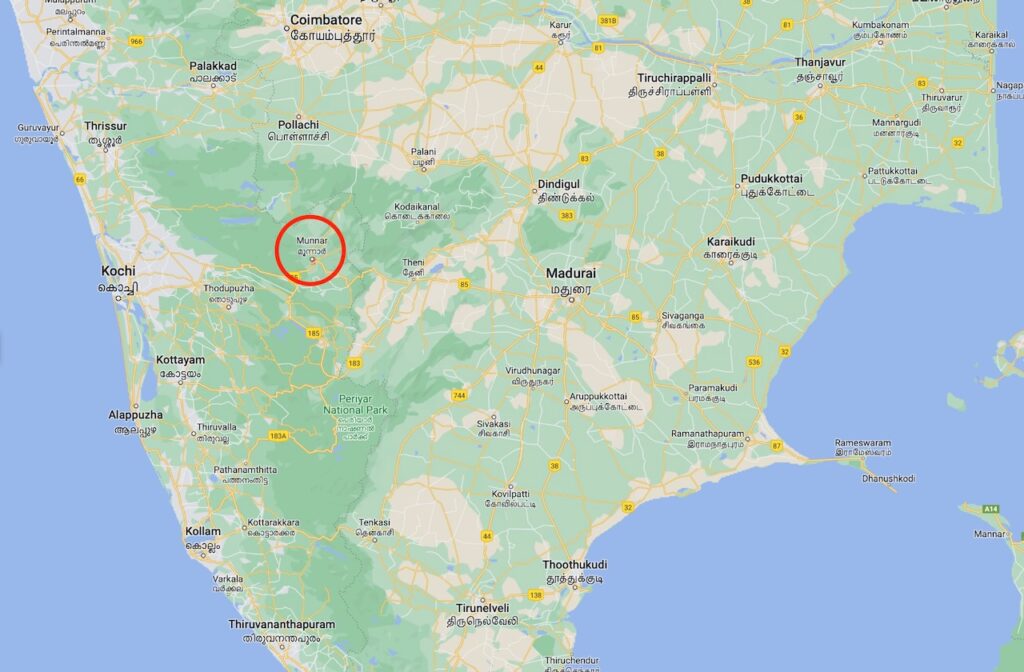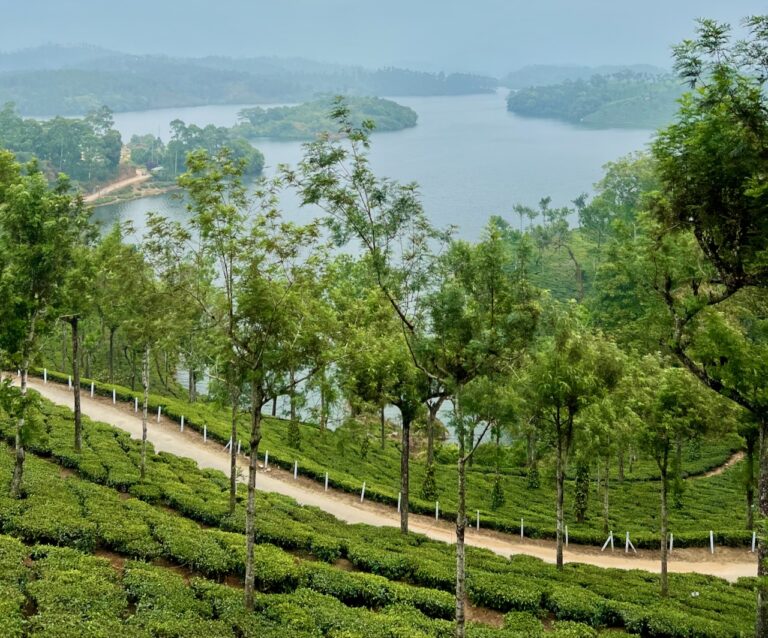
I spent three days in the tea growing region, around Munnar, in Kerala. We were at about 1,000 meters altitude, which is ideal for tea bushes. Altitude advantages (slower growth, good rainfall, ideal drainage, low humidity, better sun exposure) are greater than the disadvantages (variable and occasionally extreme weather, higher labour costs etc). The air is fresh and bracing. The slopes are completely covered with well groomed, dark green tea bushes, which undulate with the topography, as far as the eye can see. It makes for an idyllic scenery.
I took a jeep ride to go up the mountain. Broken clouds and a lot of mist covered the summit that day. The road was so bumpy that, two-thirds up the way, I told the driver to turn around, as we were nearing a completely shrouded summit. So we bumped down the hill, just as slowly as we had bumped up.
Above the upper limit of the tea plantation, there are thick tree zones before you reach the summit. An area very much favoured by wild elephant herds. From time to time you hear loud bangs, which one can mistake for fire shots. But god forbid, this is India, so no shooting of marauding wild elephants. Whenever these take a fancy to wander into a tea or cardamon plantation, the farmers use instead loud firecrackers to frighten them off. Apparently it works.
Lower down, we came across a weighing station on the side of the trail. This is where the women bring their harvest, in big jute bags.
Tea picking is no picnic. Many of the women come from the neighbouring state of Tamil Nadu, where there is not enough work for the 76 million people who live there. They are paid a daily rate of Rs500 (£5) for a bag of 27kg ! Anything over and above gives the right to an incentive bonus. Wonder how many succeed at that !!
I visited the plant factory. A highly automated affair, with conveyor belts and huge rotating oxidisation barrels that make one hell of a noise. Then sifting and pulverisation, before passing the daily quality test for the various grades. Just one person carries that quality test out whose delicate senses will decide the actual grading. It is 90% nose and just 10% taste, apparently.
I now know the difference between black tea, brown tea, green and white tea. They only use the small buds at the top of each stem for the two latter types of tea and they do not oxidise them. I definitely rely more on the taste than the smell…

